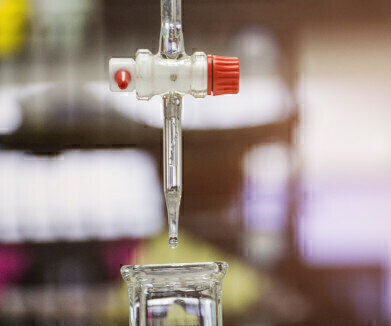Laboratory Products
3 Steps to Upgrading Your Manual Titrations
Feb 06 2019
Drop… drop… drop… Tired of waiting for that color change?
Manual titration remains a popular quantitative laboratory technique. But the increasing demands of cutting-edge research and competitive industry can quickly expose its limitations.
Several easy-to-implement upgrades exist to improve purely manual procedures. Here are the first steps to consider for extra accuracy, speed and reproducibility:
1. Automate Your Dispensing. Dispensing titrant appears easy at first. However accurate and repeatable liquid handling requires considerable time and training. Moreover, manual burettes inherently suffer from drop-to-drop variation.
Automated dosing is the simplest first step to reduce variation and improve accuracy across all titrations. A so-called 'automated burette' enables greater titrant dosing control and measurement precision. The drop-by-drop variations of traditional manual titrations disappear.
Tip: Automate dispensing for increased speed and reduced chemical usage.
2. Add a Sensor. Another useful improvement is a second set of 'eyes' to monitor the endpoint. A computer-connected sensor provides a live onscreen view of titration progress. Such 'semi-automated' setups greatly improve accuracy and reduce variance between users, especially with less-trained operators. Speed is another advantage as users find the endpoint faster without overtitrating.
Tip: Add a sensor for increased measurement speed, accuracy and reproducibility.
3. Set It and Walk Away. Automated dispensing and endpoint sensing can be connected with intelligent computer control. Systems can be set up and calibrated for routine titrations such as acid/base, water content (Karl Fischer), chloride, etc. Once the operator introduces the sample, the automated system performs an accurate titration completely unattended. Most systems then automatically calculate, record and archive results, thus also eliminating data transcription errors.
Tip: Fully automate routine titrations to eliminate manual and transcription errors, achieve full operator reproducibility and improve overall lab efficiency by freeing operators for other tasks.
For more information on semi- and fully-automated titration options, please click here.
Free Best Practice Titration Tips
Whether manual, semi- or fully-automated, learn or refresh your knowledge of titration best practices.
- Titration theory
- Common applications
- How to get the best titration results
- Accuracy precision and trueness
- Reagent and sample handling
Download the full guide: ABC of Titration
Digital Edition
Lab Asia 31.2 April 2024
April 2024
In This Edition Chromatography Articles - Approaches to troubleshooting an SPE method for the analysis of oligonucleotides (pt i) - High-precision liquid flow processes demand full fluidic c...
View all digital editions
Events
Apr 28 2024 Montreal, Quebec, Canada
May 05 2024 Seville, Spain
InformEx Zone at CPhl North America
May 07 2024 Pennsylvania, PA, USA
May 14 2024 Oklahoma City, OK, USA
May 15 2024 Birmingham, UK


.jpg)















